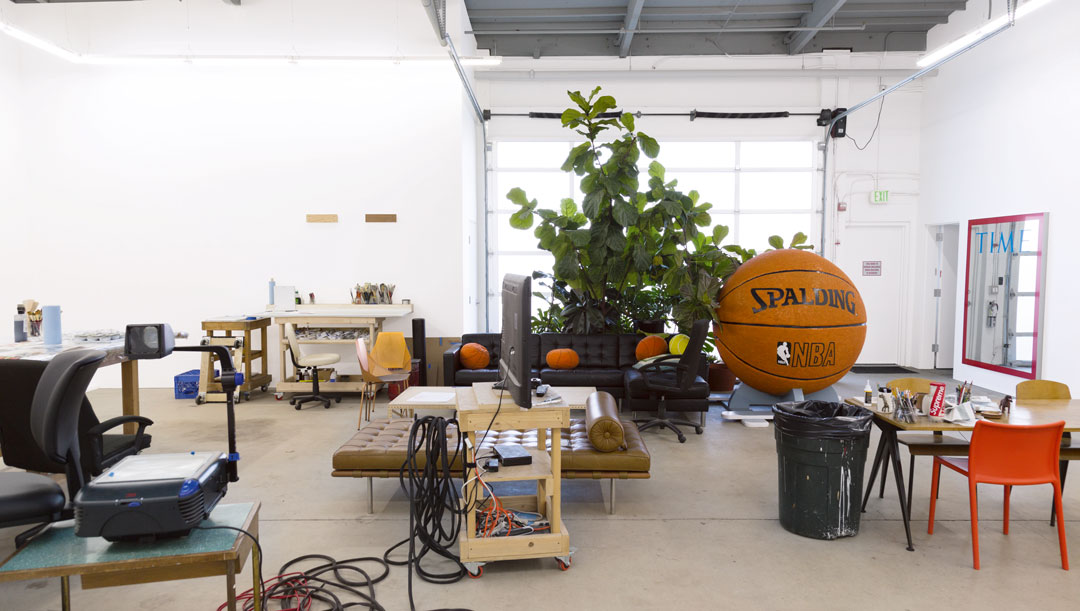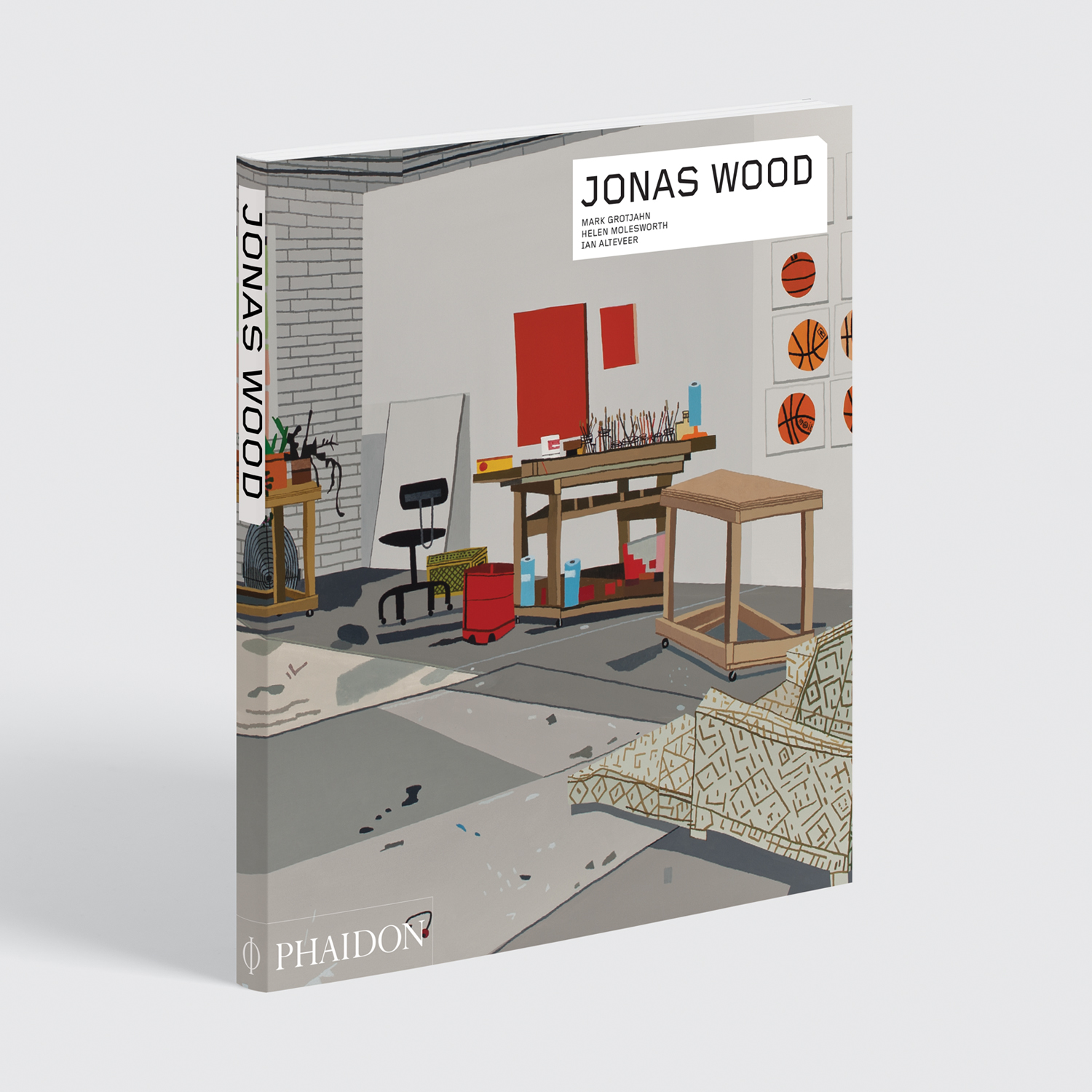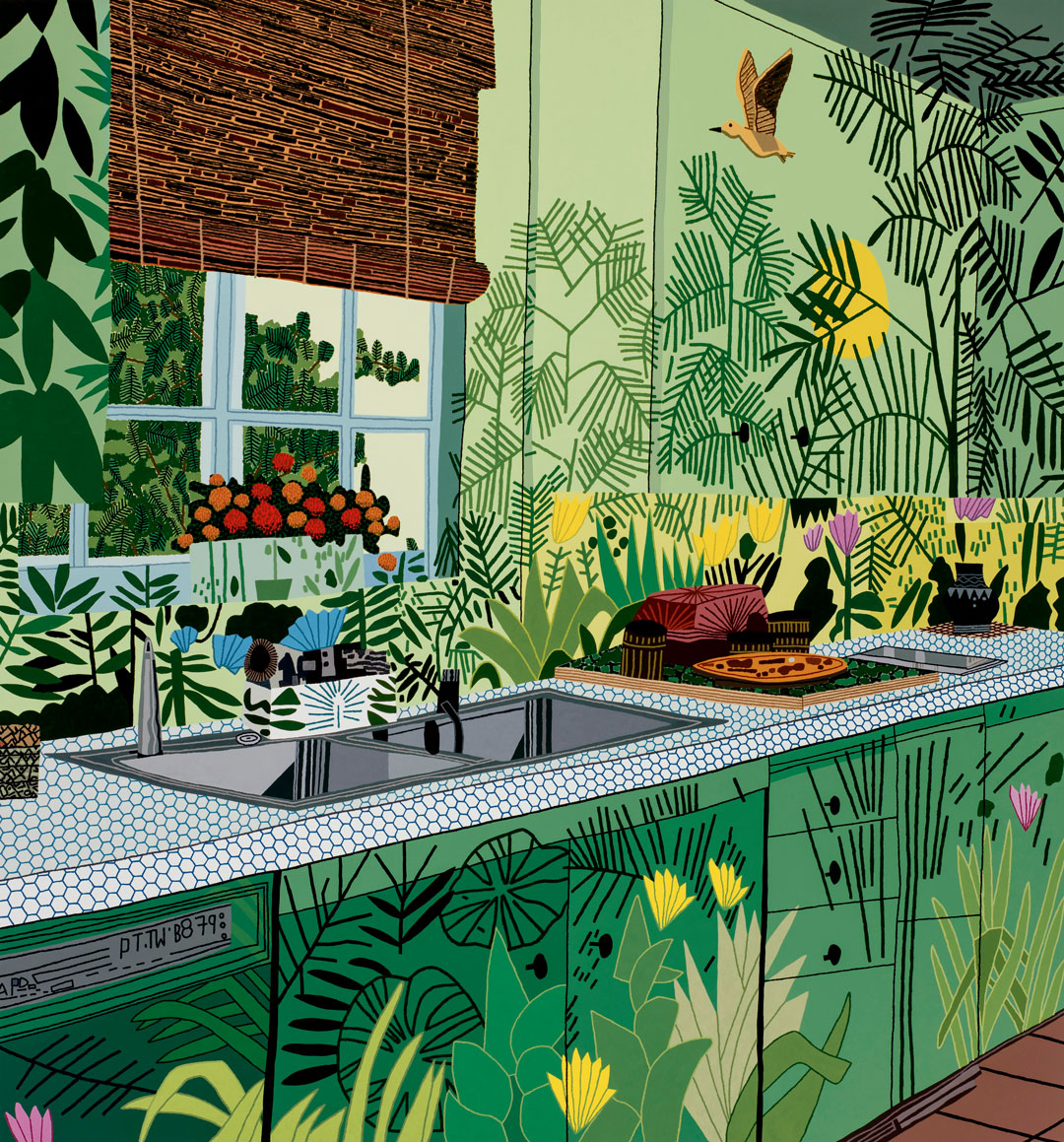
Picturing Jonas Wood – Tropical Foliage
Want to know why the painter includes so many plants in his pictures? The answer lies in the lush history of modernism
Why does the LA painter Jonas Wood include quite so many tropical plants in his pictures? Jonas Wood, our new Contemporary Artist Series book on the Los Angeles painter, suggests the answer might lie in Californian modernism.
In his guest essay, the Met Museum’s curator of modern and contemporary art, Ian Alteveer, argues that, when the Bauhaus-style met the West Coast, Los Angeles became the place where the original impulses of European modernism blended with California sensuality.
“Much of this transmission and revision of European modernist models in California can be read through the inclusion of lush, tropical woods and plants in house design, and, in particular, the ubiquitous philodendron,” Alteveer writes. “The philodendron ‘was the plant of choice among modernist architects’, writes historian Christian Larsen, ‘particularly those practitioners in Southern California who popularized modernism as the preferred style of mid-century middle class and elite taste.’
“Philodendrons and elephant ears defined interior and exterior spaces and became the signifier of a specific sort of modernist aesthetic,” Alteveer concludes.
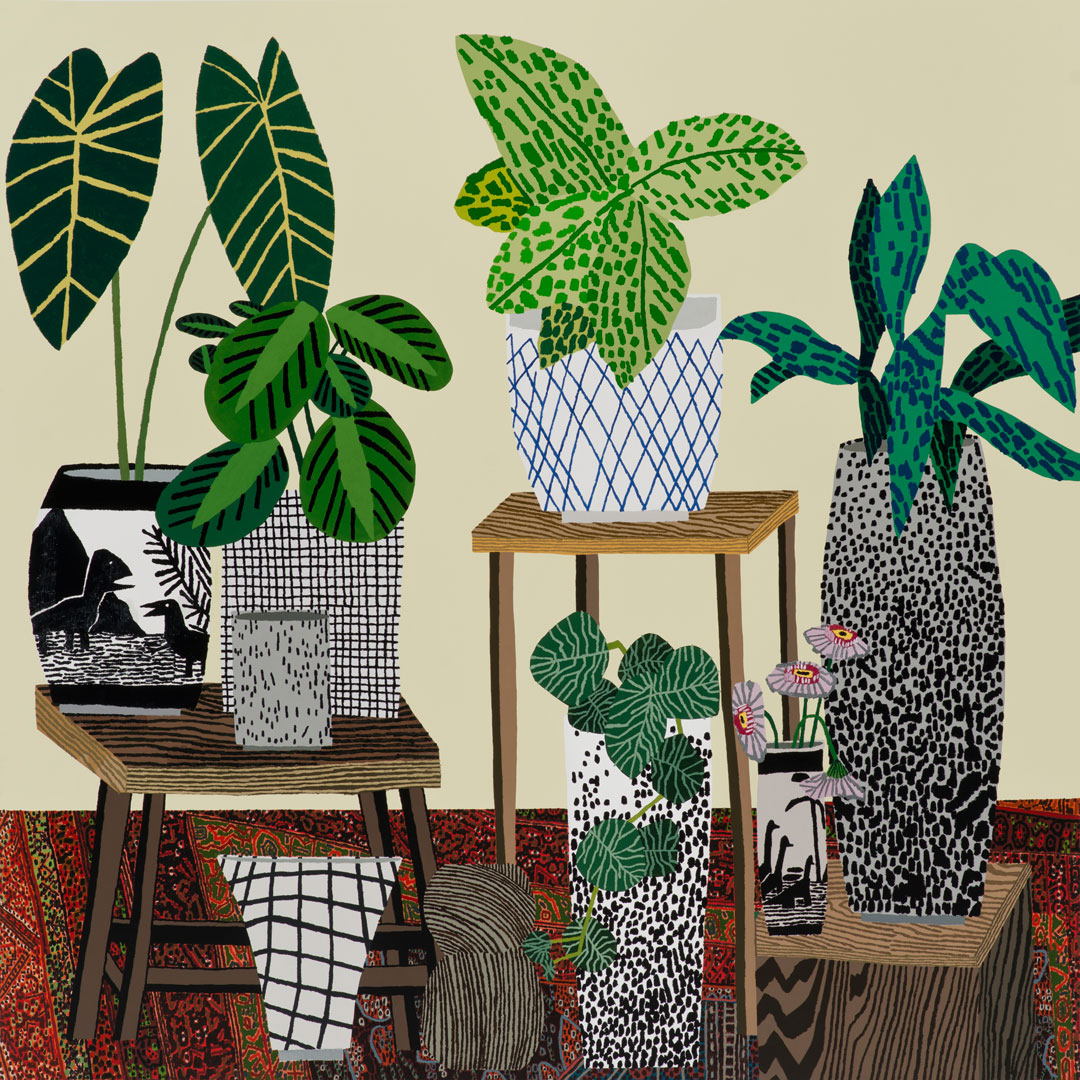
Plants don’t feature in the Barcelona Pavilion or Villa Savoye, but they abound in the Eames House and other mid-century modern Californian homes, just as they feature in both the home and in the work of Wood. Wood has painted the Eames House, as well as many other modernist indoor settings, and, in our new book the writer and curator Helen Molesworth describes Wood’s studio interior, with its “array of potted plants, orchids, cacti and succulents” dotted in among the paintings and furniture.
In Wood’s interview with fellow artist Mark Grotjahn, Grotjahn observes: “You love plants.” Wood concedes the point and even admits that the paintings he made for his show at the Hammer Museum in 2010, were “based on the idea of [modernist artist] Alexander Calder sculptures and shaped leaves attached to a stalk with what looks like a simplified base, almost like a plinth.”
This mixing up of an everyday love of tropical horticulture with modernist art and architecture is further demonstrated with Clippings, a series of paintings first shown in 2013 in which - Alteveer quotes fellow curator, Richard Marshall - are featured “images of plant forms that have literally been clipped or borrowed from other paintings.”
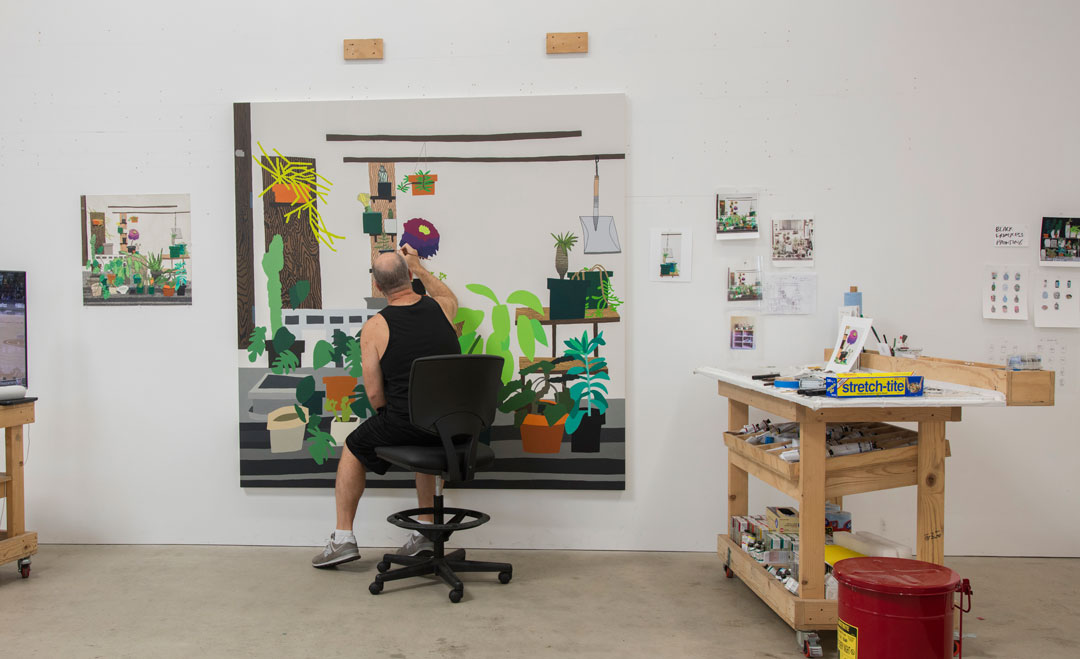
“Wood sees these pictures as directly tied to modernist practice,” Alteveer writes. “In Wood’s words, they explore ‘shape and repetition in the same way as Alexander Calder – through suspension in space. The plant paintings are refined, simplified forms of just shape and colour with only a touch of representation.’”
Wood loves 20th century modernist artists; he understands the 20th century’s Modernist art-world rallying cry to merge art and life; and he probably also grasps a parallel urge within modernist architecture, to perfect and elevate the way we live.
Certainly, he understands how houseplants symbolize modernist living. In this respect, Alteveer argues, Wood probably owes a debt to an earlier mid-century painter of southern Californian life. “Wood has also certainly absorbed the lessons of David Hockney’s renowned California works of the 1960s that celebrate Los Angeles’s boxy architecture and planar forms. In Hockney’s Lawn Being Sprinkled or Savings and Loan Building (both 1967), for example, blocks of brightly hued, uniformly coloured acrylic are punctuated by carefully rendered palm trees and aloe plants.”
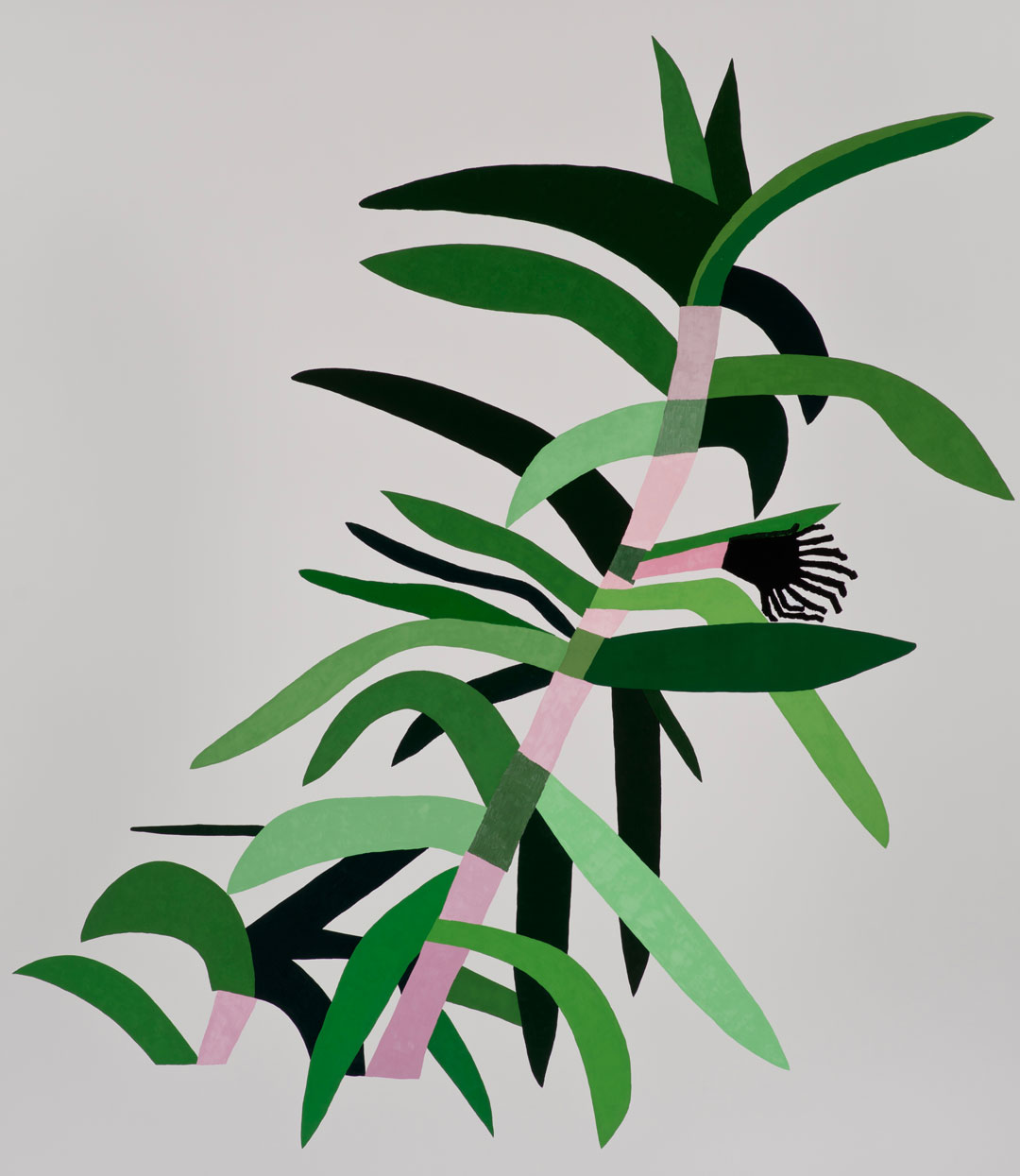
None of this denies Wood’s straightforward love of horticulture; plants, pots, paintings, basketball players and the people he loves are all mixed up in his pictures, because he likes them all. Yet he was an art history scholar before he was an artist, and even studied Hockney’s work in England. There’s no denying that the additional symbolism, when it comes to modernism.
“Wood’s similar focus on botanicals and precious collectibles, whether represented in the genre of still life or as elements in architecturally distinctive personal spaces, speak both to his deep interest in the history of modernist painting,” writes Alteveer, “and to the richness they represent as symbols of a specific, bold and experimental modernity.” And that’s a strand of modernism that lives on and flourishes, in Wood’s plant paintings.
To see more of his pictures, and to understand them a little more clearly too order a copy of Contemporary Artist Series book on Jonas Wood here. Meanwhile, for more on Mid-Century Modernist architecture, take a look at this book.
